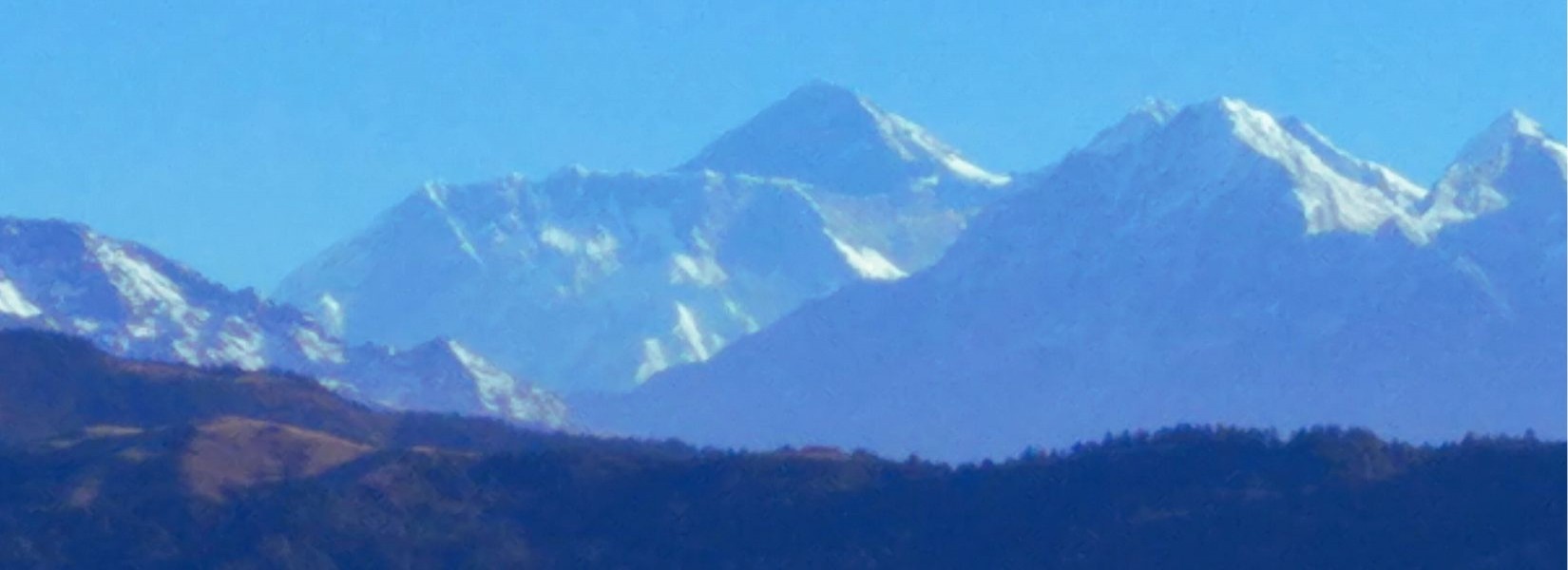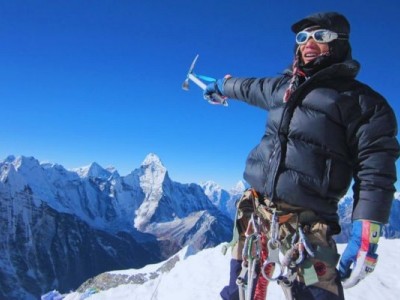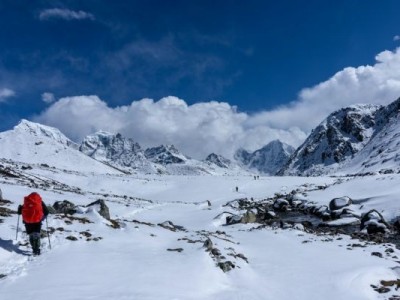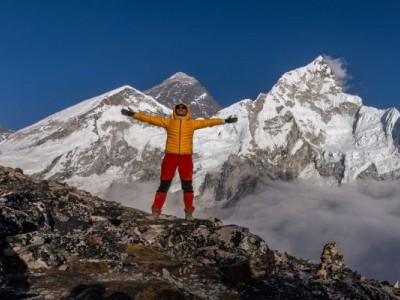Why is Autumn the Best Time for Pikey Peak Trek?
Autumn, from September to November, is universally considered the best trekking season with the Piikey Peak Trek. After the monsoon has cleared the skies and restored views of the world's greatest mountains and all the colours come out after the cleansing of the rains. Autumn weather is optimal for trekking- the temperatures are comfortable, the precipitation is negligible, the paths are safe, and the trek is enjoyable.
Following the monsoon, the environment becomes brilliantly colourful, with hills and valleys bursting with lush greenery. Rhododendron forests, hiking through pine trees followed by precious terraced fields, are great trek backdrops. The air in autumn is clear and crisp, allowing trekkers to take in everything decently, making you appreciate the less-than-average "mountain views" that this trek is touted for.
One of the most notable aspects of trekking in autumn is that many of the local festivals, including the biggest Hindu festival, Dashain and the festival of lights, Tihar, occur at this time of the year, allowing trekkers to experience some of the local cultural festivities and celebrations.
Pikey Peak Trek in September - Transition from Monsoon
The month of September marks the end of the monsoon season and the beginning of autumn in Nepal. During this transition, the landscapes surrounding Pikey Peak undergo dramatic changes, with the hillsides coming alive with vibrant greens and colorful wildflowers blooming everywhere.
Weather and Temperatures in September
With the departure of the monsoon, September offers a more stable weather pattern in the Pikey Peak area. At elevations below 3,500 meters, the typical temperature is between 10°C and 20°C (50°F to 68°F), and at elevations above 3,500 meters, the temperatures are between 5°C to 15°C (41°F to 59°F). Though some light rains may happen, they hardly disrupt trekking activities, and instead, make everything more apparent and more beautiful with the vegetation cleaned by the rains and new, clear air to breathe without dust.
Beauty of Nature and Cultural Experience in September
September transforms Pikey Peak region into a riot of color. Following the end of the monsoon rains, ripe orchards, green forests, colourful meadows, and a river full of sparkling waterfalls provide stunning photographic opportunities. The verdant scenery and the blue skies that accompany it form a perfect backdrop for snow-capped Himalayan peaks.
The trek through real Sherpa villages and cultural exchange is fulfilling. Each stop along the trail will expose you to their daily habits, and everyone enjoys sticking their hands in the soil for post-monsoon agricultural activities. The cultural heritage from their Tibetan Buddhist background is increasingly noted in the many monasteries, prayer flags, mani walls, and wonderful people that the trail traverses.
Trekking Experience in September
A trek in September will give a refreshing experience with "newly washed" trails and less foot traffic to contend with. The fresh post-monsoon environment will provide welcoming hiking conditions with clean mountain air and comfortable temperatures. The medium level difficulty of the Pikey Peak trek will appeal to many trekkers and is ideal for beginner trekkers needing their first Himalayan adventure.
Dashain Festival in September
For many people, the September time of September signals the start of Dashain, the most important Hindu festival in Nepal. The Pikey Peak is primarily Tibetan Buddhist, but there are aspects of Dashain evident in some communities. The fun revolves around religious rituals, music, family gatherings and more. Trekkers in the Pikey Peak area should have the chance to see some of these observances and could be invited to join in the festivities, which would add a cultural layer to the trekking experience!
Pikey Peak Trek in October - Peak Trekking Season
In short, the month of October is the optimum time for trekking in the Pikey Peak region as it is the most favorable month to have a great adventure in the Himalayas. The weather is completely stabilised, and you will have clear skies and awesome visibility of the entire mountain range.
Weather and Temperature in October
October offers the best weather for trekking in the Pikey Peak area. The skies are usually clear, so you won't miss the Grand march of the Himalayan giants, such as Mount Everest. Above 3,500 meters, temperatures range between 5°C and 15°C (41°F to 59°F). Below 3,500 meters, temperatures hover between 10°C and 20°C (50°F to 68°F). Rain is infrequent, and the trails have always been dry and safe for trekking.
Scenic Beauty and Cultural Immersion
October makes the Pikey Peak area a true feast for the eyes! The bright autumn colours create a beautiful patchwork of gold, orange, and red to soak in against the dramatic backdrop of snow-capped peaks. The summit of Pikey Peak at 4,065 meters offers amazing views of the Himalayas, stretching from Dhaulagiri in the west to Kanchenjunga in the east, including Everest, Makalu, Cho Oyu and Lhotse.
The cultural landscape is also impressive. Travellers can visit important sites of religious significance, as well as spend time with local Sherpa communities. The name ‘Pikey’ derives from the name of the deity of the local Sherpa clan, and means clear sky over nature, and is representative of the deep spiritual connection that the local people consider themselves to have with their environment.
Trekking Experience in October
The Pikey Peak Trek in October strikes the ideal blend of difficulty and accessibility. The trek is moderately difficult, with stable weather and clear paths allowing trekkers to enjoy the splendid views and cultural encounters, rather than dealing with tough elements. The pinnacle of Pikey Peak provides one of the best views of Mount Everest, according to Sir Edmund Hillary, which makes the trek worth it.
If you are a photography enthusiast, October is an ideal month to take incredible pictures of the Himalayan panorama, historic monasteries, local vibrancy, all taken with bright blue skies all around. The trekking conditions were pleasant, and the views were breathtaking, making October the ideal month for the Pikey Peak Trek.
Tihar Festival in October
October is frequently associated with Tihar, Nepal's festival of lights. While this is mainly a Hindu festival, the impact of Tihar naturally expands across communities from varied traditions in the region. Houses are brightly lit with oil lamps or illuminations in all colours, which produces a magical experience along the trekking route. Trekkers may witness local families carrying out rituals to honour a variety of animals and deities, especially Laxmi, the goddess of wealth and prosperity. The festive atmosphere adds another dimension to the trek and provides insights into local traditions and beliefs.
Pikey Peak Trek in November - Clear Views and Crisp Weather
With autumn disappearing into winter, November signals cooler weather and clearer skies in the Pikey Peak area. Although temperatures are cooler, the increase in visibility and fewer feet on the trails is a welcome trade-off!
Weather and Temperature in November
November is the start of the pre-winter season in the Pikey Peak area. Above 3,500m, temperatures can be anywhere from -0C to 10C (32°f to 50°f), and below 3,500m show some moderate temperatures at about 5c to 15c (41°f to 59°f). The temperature can drop significantly at night, often freezing at the higher elevations. Overall, it remains relatively cold, but the weather is stable; there may not be much rain, but at the higher elevations, there may be some early snow.
Natural Beauty and Cultural Immersion
November in the Pikey Peak area showcases a quite different kind of beauty. The biggest turn around in version 1 is in the aspects that combine together to make up the scenery: vegetation is going into dormancy and exposing or allowing for even more contrast between the two earthly colours of the land and the bright white of snow-capped peaks, making an already striking visual palette even more interesting during the month of November. Also, the crisp, cool, dry air is at its best, with the sharpest views of the Himalayas, ideal for photographers.
In addition to all of this, locals are preparing for winter, providing trekkers with views of how they traditionally preserved food and other winter activities when the snows fall and then are melted away from the thermodynamic pressure in all of the valley and mountain ranges of the Himalayas during the minimum daylight.
November, with fewer tourists around, allows for a slightly more in-depth interaction with the Sherpa people and their culture.
Trekking Experience in November
Trekking in November is the best time for you to get a more personal and reflective experience on the trails, when compared to the busier months of trekking. The trails offer you more solitude and still allow for a great opportunity to connect with the beautiful wilderness environment. This time of year has crisp air and cooler temperatures, which, as a traveller, enrich your trekking experience; however, cold-weather trekking gear becomes paramount, especially in the colder morning hours and nighttime.
The level of challenge is slightly increased due to colder conditions; however, the reward is well worth it. Your level of fulfilment will be higher because of exceptional mountain views, and the overall sense of challenge and accomplishment can be liberating. If you're someone who enjoys trekking on more quieter trails and can handle the cooler temperatures November is a great opportunity to trek on the Pikey Peak Trek.
Cultural Highlights During Autumn in Pikey Peak Region
The Pikey Peak area has a lot of Sherpa culture and Buddhist heritage, which gives trekkers many opportunities for cultural engagement. During autumn, there are several elements of local culture that are particularly accessible and intriguing:
Monasteries and Religious Sites
The trek goes past some significant Buddhist monasteries and religious sites that are vibrant in autumn. Many of these spiritual centres will hold special ceremonies at this time and present the trekker with a chance to observe monks' prayers and perform traditional rituals. The monasteries themselves provide excellent photo opportunities with their colourful prayer flags set against the clear blue of the autumn sky.
Local Festivals and Celebrations
Autumn coincides with a number of important festivals in Nepal. If you happen to be trekking during Dashain or Tihar, you may encounter local festivities in the Sherpa villages. The festivals feature traditions that are mostly based around religious rituals and family functions. This will be your best opportunity to look into the local culture and way of life. The festival of lights (Tihar) is remarkably lovely, as houses can be seen decorated with oil lamps and candles.
Traditional Sherpa Hospitality
The Sherpa people are culturally associated worldwide with the friendliness and hospitality these people have toward their guests. The hospitality and custom of sharing food and stories come to a peak in the fall months when the weather is nice, and the festivals are joyful.
Trekkers who stay in teahouses along the way will be part of this aspect of the Sherpa culture with their host's authentic cuisine, and possibly even part of their evening gatherings.
Agricultural Activities
It is harvest time during fall in the area, and hikers may come across local farmers harvesting their crops, preparing for the winter months. It is an opportunity to witness traditional agriculture that has sustained various communities in what can be a challenging mountain environment for a very long time.
Conclusion
The Pikey Peak Trek in the Autumn offers an incredible balance of scenery, culture, and conditions for trekking. From the verdant, post-monsoon landscapes of September, to the spectacular visibility and moderate temperatures of October, to the clear, high-altitude air of November, every month of autumn offers deliriously good experiences for trekkers looking for their next mountain adventure.
What makes this trek so special is that it's mostly suitable for a wide range of trekkers (even absolute beginners), all while offering incredible views of some of the tallest peaks on Earth. Sir Edmund Hillary may not have misspoke when he once stated that the view of Mount Everest from Pikey Peak was one of the best views there is to be had.
If you are looking for a true Himalayan experience without the hustle and bustle of the more popular routes, the Pikey Peak Trek in autumn has everything a trekker could want - stunning views, unique cultural experiences, and the majestic serenity of the Nepal Himalayas. Whether it is greeting the golden sunrise with a coffee and camera drawbridge in front of Mount Everest, meeting some of the friendly Sherpa people, or wandering the peaceful autumn trails, the trek is sure to provide you with memories that last a lifetime.
Frequently Asked Questions
What makes autumn the best season for trekking Pikey Peak?
Clear skies, regular weather, and temperate temperatures make autumn the greatest time to see Mount Everest and the adjacent peaks. After the monsoon, everything was clean and fresh, forests vibrant with colourful foliage. It was the best time to trek Pikey Peak, and local celebrations such as Dashain and Tihar added richness and excitement to the adventure.
How challenging is the Pikey Peak Trek, and what level of fitness is necessary?
The Pikey Peak Trek is regarded as a moderate trekking excursion suitable for both beginners and expert trekkers. The trail has gradual ascents along with some steep sections, and culminates at an altitude of just over 4,065 meters. While you don't need to be a super athlete to enjoy the trek comfortably and safely, when considering your fitness level, we do recommend that you be "moderately fit"; some previous cardio training and engaging in exercises that build leg strength are recommended.
What are the best viewpoints on the Pikey Peak Trek?
Pikey Peak is a viewpoint at the highest elevation of all the points on Pikey Peak, which is approximately 4,065 meters. The Himalayan frames are then presented in a ringed view, including Everest, Lhotse, Makalu, Kanchenjunga, and so on. Furthermore, the conditions for dawn and sunset from this mountain are breathtaking. This is, without a doubt, the best part of the trek.
Can I trek Pikey Peak without a guide, and what are accommodation options like?
Trekking without a guide is feasible on well-lit trails, with three-day village stops, but for safety and cultural information, as well as contributing to the local economy, it's best to hire a local guide as well. Accommodation along the way consists of simple teahouses with basic meals and rooms, but the clothing/facilities improve as you get closer to the main villages.
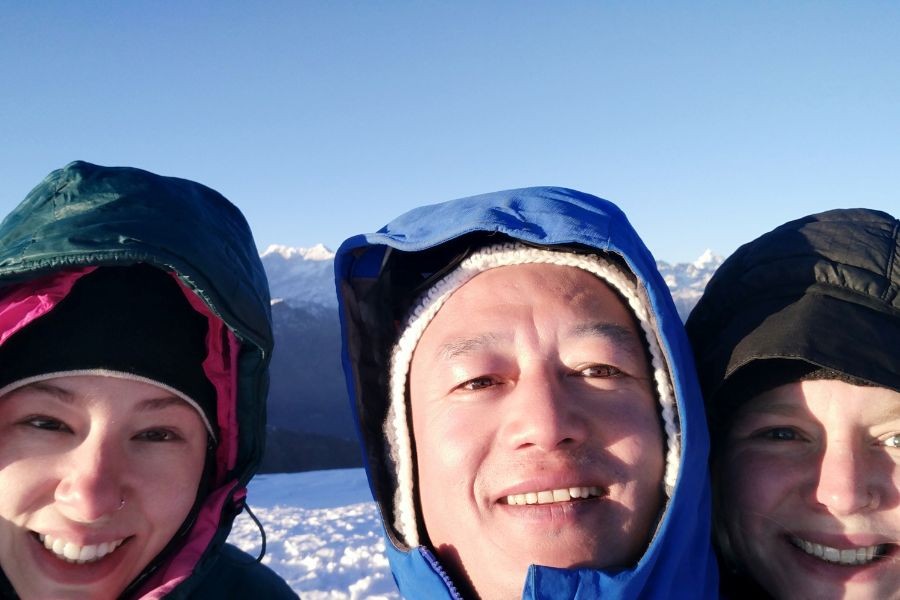
Ready to witness the breathtaking Himalayan autumn views from Pikey Peak?
Don’t wait- start planning your unforgettable trek today!
Inquire Now: [email protected]
Join Our Online Briefing on WhatsApp: +977 9851006023 (Bikesh)
Take the first step- your adventure to Nepal’s hidden gem awaits!
